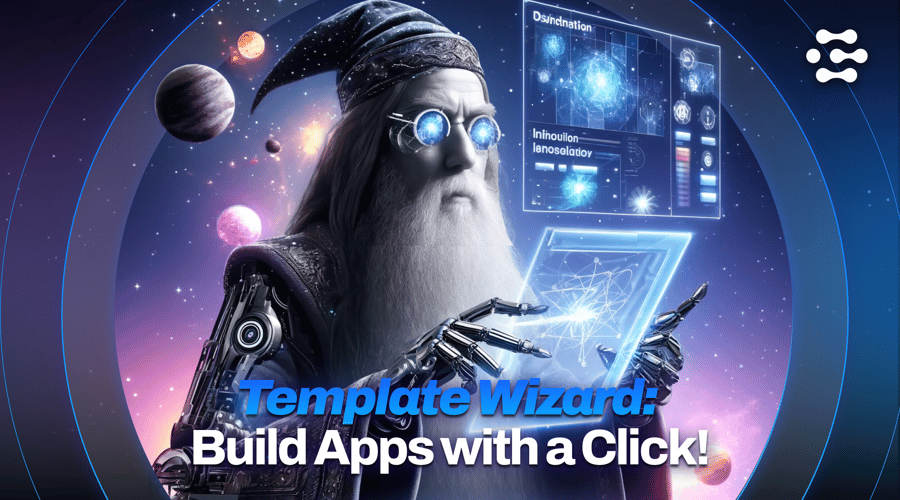This blog post focuses on new features and improvements. For a comprehensive list, including bug fixes, please see Continued note.
Introduced app templates for seamless app creation.
We now provide pre-built, ready-to-use templates that speed up the app creation process. Each template comes with a range of resources, such as datasets, models, workflows, and modules, that allow you to quickly hit the ground running with your app creation process.
To access the templates:
- You can either go to the Community Apps section and filter apps by selecting “templates” option on the right.
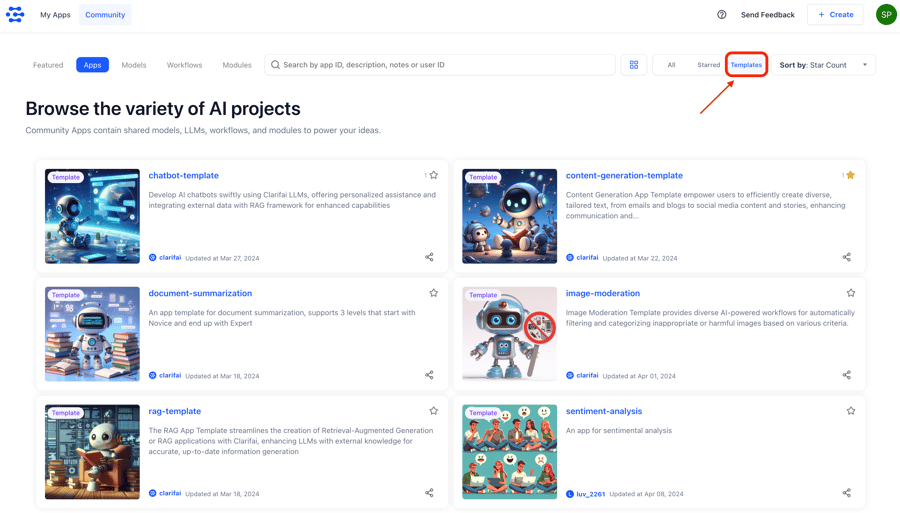
- Or you can choose “Use an app template.Select Create your app from the Create option on the top right.
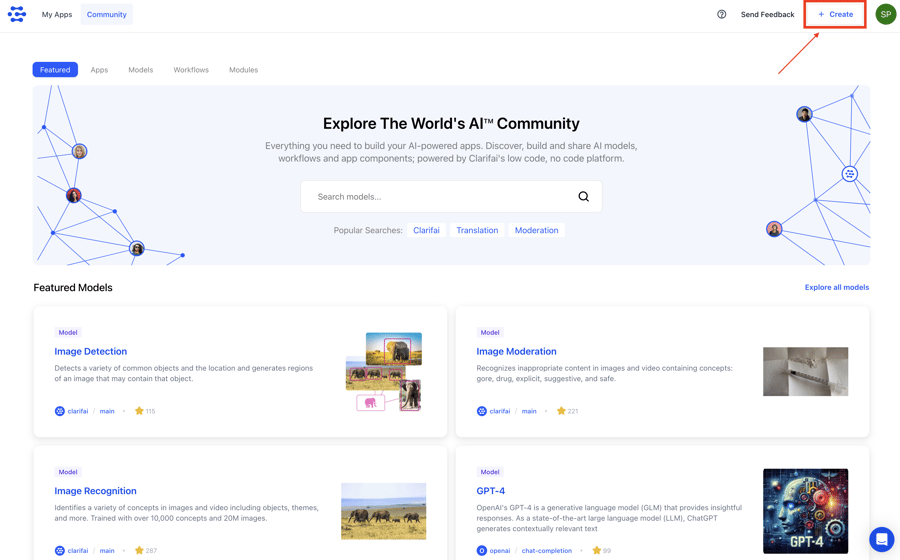
Here are five different templates currently available that cover different use cases.
- Chatbot-Template: The Chatbot App Template serves as a comprehensive guide to quickly and efficiently building an AI chatbot by leveraging the capabilities of Clarify's large language models (LLMs).
- RAG-Template: This RAG app template offers a comprehensive guide to building RAG (Retrieval-Augmented Generation) applications using Clarify effectively. This enables you to quickly experiment with RAG using your own datasets without the need for extensive coding.
- Document summary template: This template gives you multiple workflows for different levels of summaries, such as a few-paragraph summary with prompts, a multi-page summary, and an entire book summary.
- Content creation template: This app template discusses several content creation use cases like email writing, blog writing, answering questions, etc., and content creation, leveraging various LLM models and optimizing it through various prompt engineering techniques. So it comes with several ready-to-use workflows.
- Image moderation template: This template explores different image moderation scenarios and offers ready-to-use workflows tailored for different use cases. It leverages various Clarify-trained computer vision models for image moderation.
Released a new Node SDK. [Developer Preview]
- We released the first open source version (for developer preview) of the Node SDK for JavaScript/TypeScript developers focused on building web services and web apps that use the AI model.
-
It's designed to offer a simple, fast, and efficient way to experience the power of Clarifai's AI platform – all with just a few lines of code.
- You can check its documentation. Here.
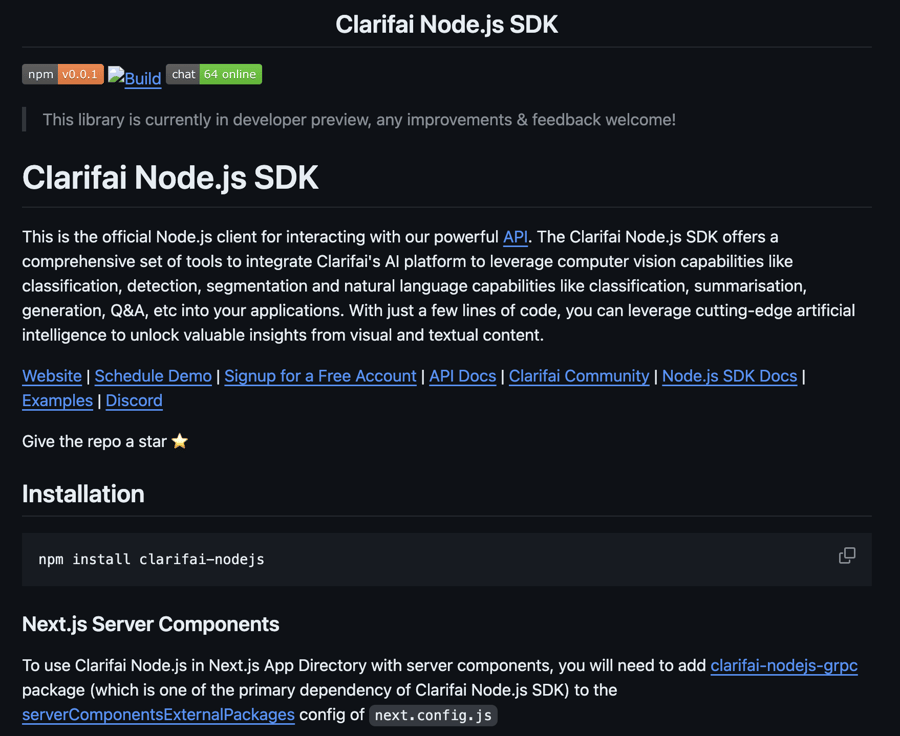
New models released
- Hosted by Clarify. Mxbai-embed-large-v1, A state-of-the-art, versatile, sentence embedding model trained on a unique dataset for superior performance across a wide range of NLP tasks. This is also at the top MTEB Leader Board.
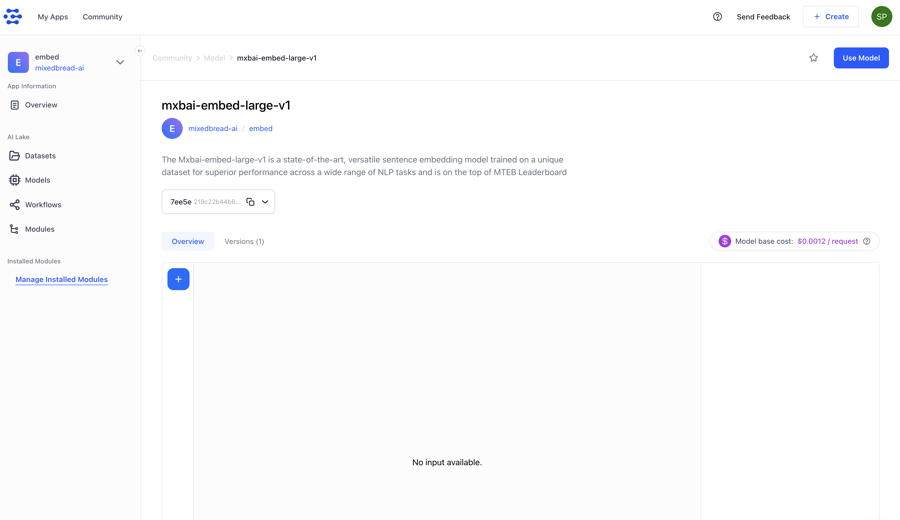
-
Hosted by Clarify. Genstruct 7B, An Instruction Generation LLM, designed to generate accurate instructions with raw text corpus. It enables the creation of new, partially synthetic instruction fine-tuning datasets from any raw text corpus.
-
Wrapped up Diagram's Ora Text-to-Speech model, which offers fast, high-quality and efficient speech synthesis, enabling lifelike voices for AI agents in various applications.
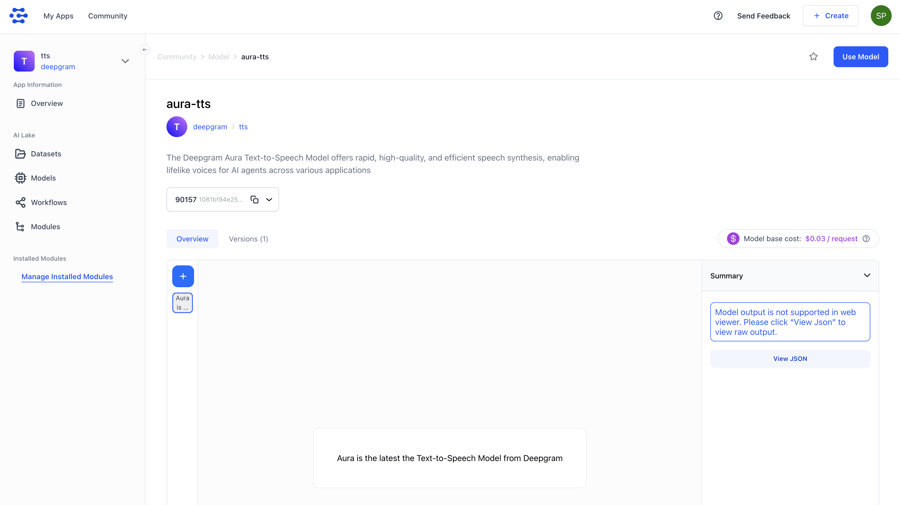
-
Wrapped up Mistral-Biga flagship LLM developed by Mistral AI, and known for its strong multilingual capabilities, advanced reasoning skills, mathematical skills, and coding skills.
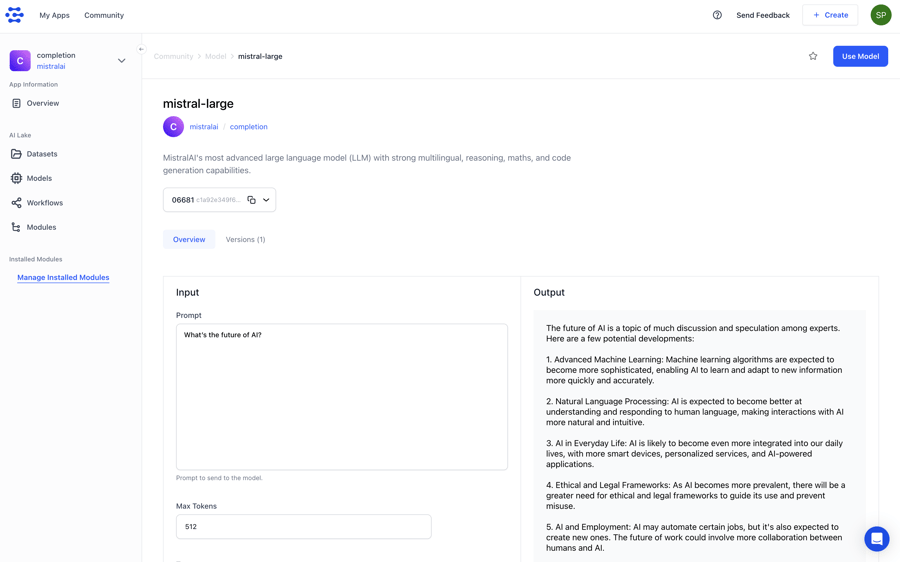
-
Wrapped up Mistral-Medium, a mid-sized model of the Mistral AI. It supports a context window of 32k tokens (about 24000 words) and outperforms Mixtral 8x7B and Mistral-7b on benchmarks across the board.
-
Wrapped up Mistral-SmallA balanced, efficient large language model that offers high performance across a variety of tasks with low latency and wide applicability.
-
Wrapped up DBRX-instructionsA state-of-the-art, efficient, OpenLLM by Databricks. It is capable of handling input lengths up to 32K tokens. This model excels at a wide set of natural language tasks, such as text summarization, question answering, extraction, and coding.
Added the ability to easily import datasets via archive files.
-
Within the Input Manager, users can now seamlessly upload archive or zip files containing diverse data types such as text, images, and more.
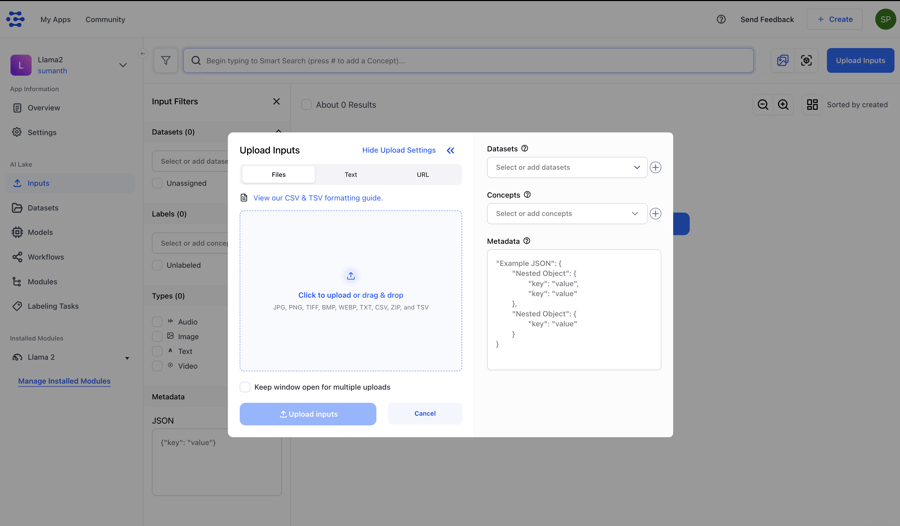
Devtools integrations
Integrated the unstructured Python library with ClariFi as a target destination.
-
Unorganized library Provides open source components for the registration and preprocessing of images and text documents. We have integrated it with Clarifai to allow our customers to streamline and optimize data processing pipelines for LLMs.
Added support for exporting your own trained models. [Enterprise-only]
- You can now export your own models to pre-signed URLs from our platform. Upon export, you'll receive model files accessible via pre-signed URLs or private cloud buckets, along with access credentials.
- Please note that we only support exporting trainable model types. Models like
embedding-classifiers,clusterersAndagent system operatorsNot eligible for export.
Improved the Model-Viewer UI of multimodal models
- As for multimodal models GPT4-V, users can provide input text prompts, add images, and optionally adjust inference settings. The output contains the generated text.
- Also supports the use of Third party API keys (For Enterprise Users).
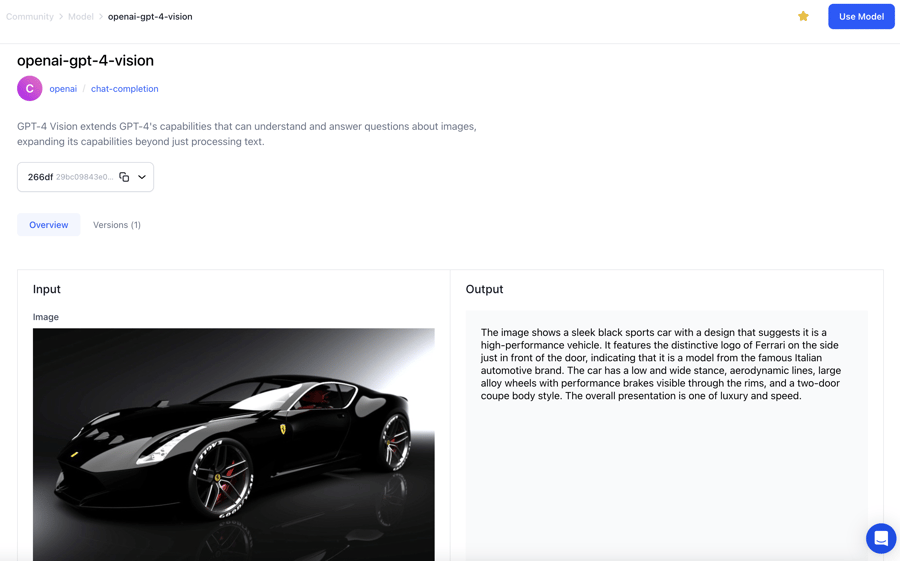
Added support for exporting models.
- Now you can use the Python SDK. Recover Your own trained models in outdoor environments.
Introduced improvements to the Data Loader module
- We added Retry the mechanism. Introduced systematic handling for failed uploads and failed inputs. These improvements improve the data import process and reduce errors in the data loader module.
Added support for dataset version ID.
- Previously, it was not possible to access or interact with specific versions of datasets within the Python SDK. This update introduces support for dataset versions in several key areas. Here.
I have improved. Local model upload Functionality
- We now provide pre-signed URLs for users to upload models.
- We added educational content and tooltips to the native model upload UI.
- We've made other improvements to make the process of uploading models easier and more intuitive.
Enhanced functionality deeds column within the version table of the model
- We refactored the column into an intuitive context menu. Now, when the user clicks the three dots, a drop-down menu offers different options, improving user experience and accessibility.
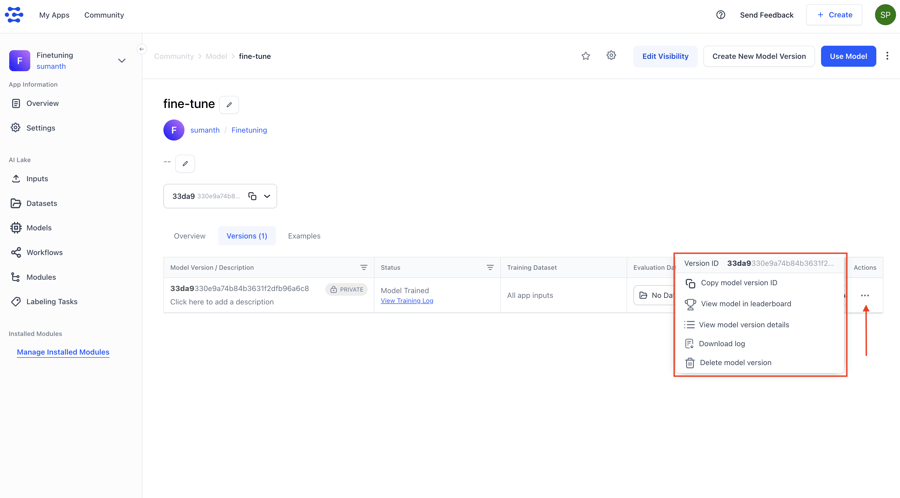
Enabled deletion of associated model assets when removing a model annotation.
- Now, when deleting a model annotation, the corresponding model assets are also marked as deleted.
Improved functionality Work flow is encountered.
- You can now use the Face workflow to efficiently create face landmarks and perform visual face searches in your applications.
Added Python SDK code snippets. Use models/workflows. The modal window
- If you want to use a model or workflow to make an API call, you need to click Use models/workflows. button in the upper right corner of an individual page of a model or workflow. The model that pops up contains snippets in various programming languages, which you can copy and use.
- We introduced Python SDK code snippets as a primary tab. Users can now easily access and copy Python SDK code snippets from Modal.
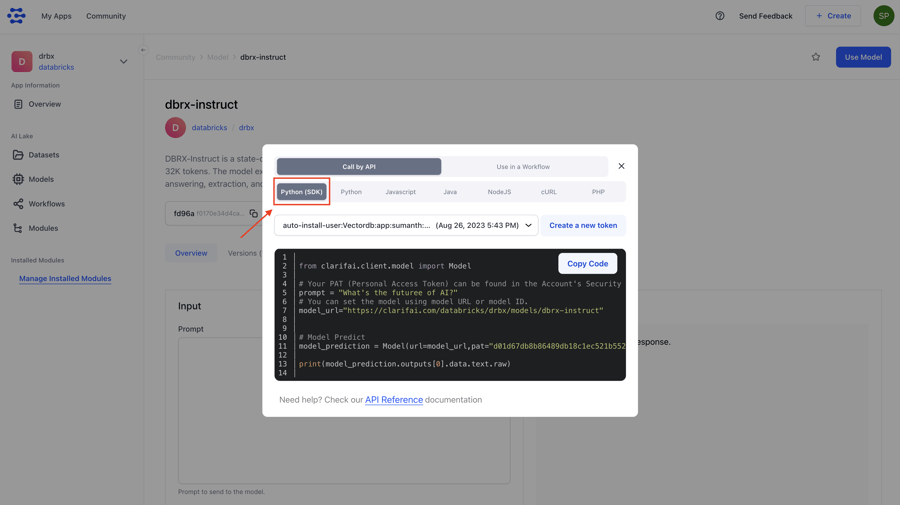
Improved resource filtering experience on desktop devices
- We moved the filtering sidebar from the right side of the screen, improving accessibility and user flow.
- We've also made other improvements to the filtering feature, such as using chevrons to mark breakpoints, increasing clear button alignment, and increasing the appearance of the divider line.
- We also added
Multimodal-to-text,Multimodal-embedderAndtext-to-audioFiltering options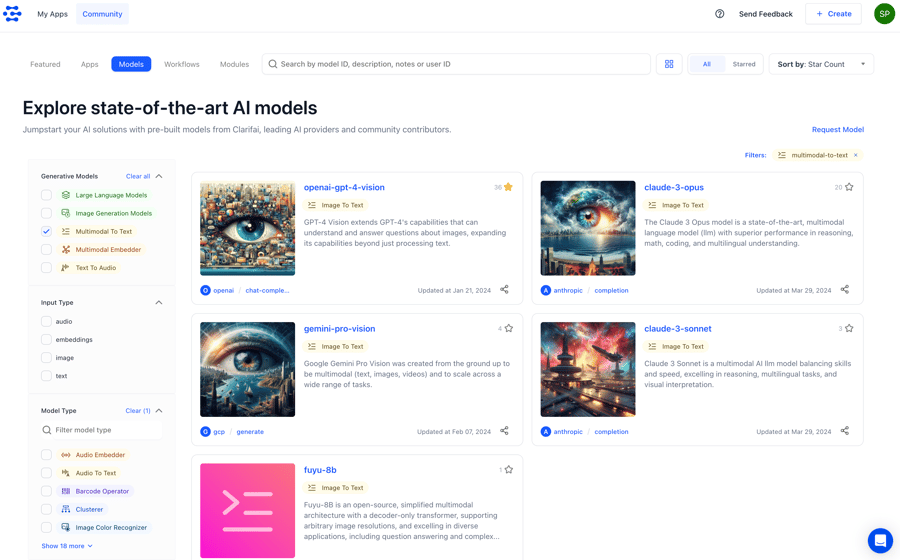
Improved mobile resource filters with a new design.
- Implemented a new and improved design for resource filters on mobile platforms.
Added the ability to organize apps listed on the collapsible left sidebar of your individual app page.
- You can now sort apps alphabetically (A to Z) or by “last updated”. It lets you find the apps you need quickly and efficiently.
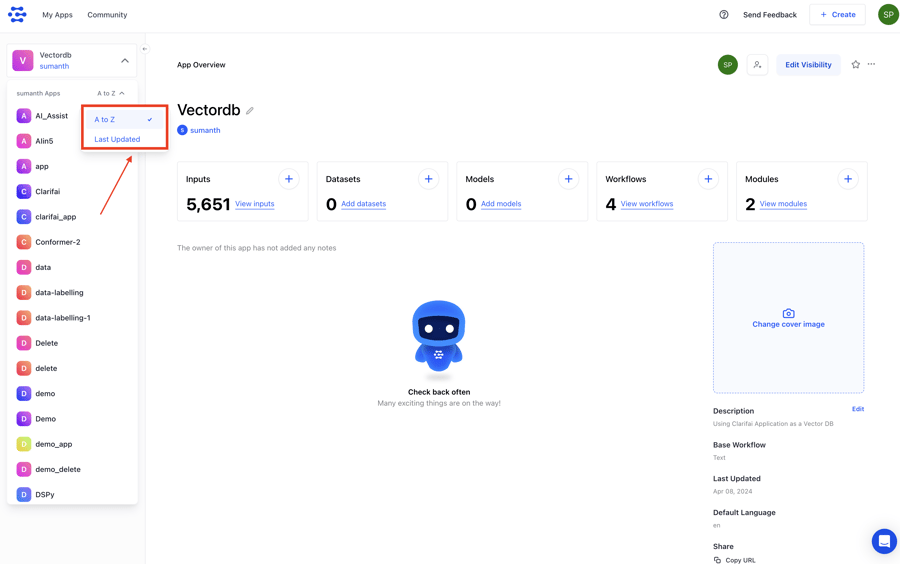
Improved Markdown template functionality with custom variables
- We have introduced a feature that allows users to enter custom variables such as
andinto markdown templates, particularly in sections like the Notes section of a model. These variables are dynamically replaced with the correspondinguser_idAndapp_idExtracted from URLs, allows you to personalize content within your templates. - For example, in the Notes section of a model, you can now add
to dynamically display the user who created the model.
Improved responsiveness for 13-inch MacBooks
- We improved responsiveness issues to ensure an optimal viewing experience for 13-inch MacBook devices with a viewport of 1440px × 900px dimensions.
Made enhancements to the RAG (Retrieval Augmented Generation) feature
- Enhanced the RAG SDK’s
upload()function to acceptdataset_idparameter - Enabled custom workflow names to be defined in the RAG SDK.
setup()Function - Added support for chunk sequence numbers in metadata when uploading chunked documents via the RAG SDK.
